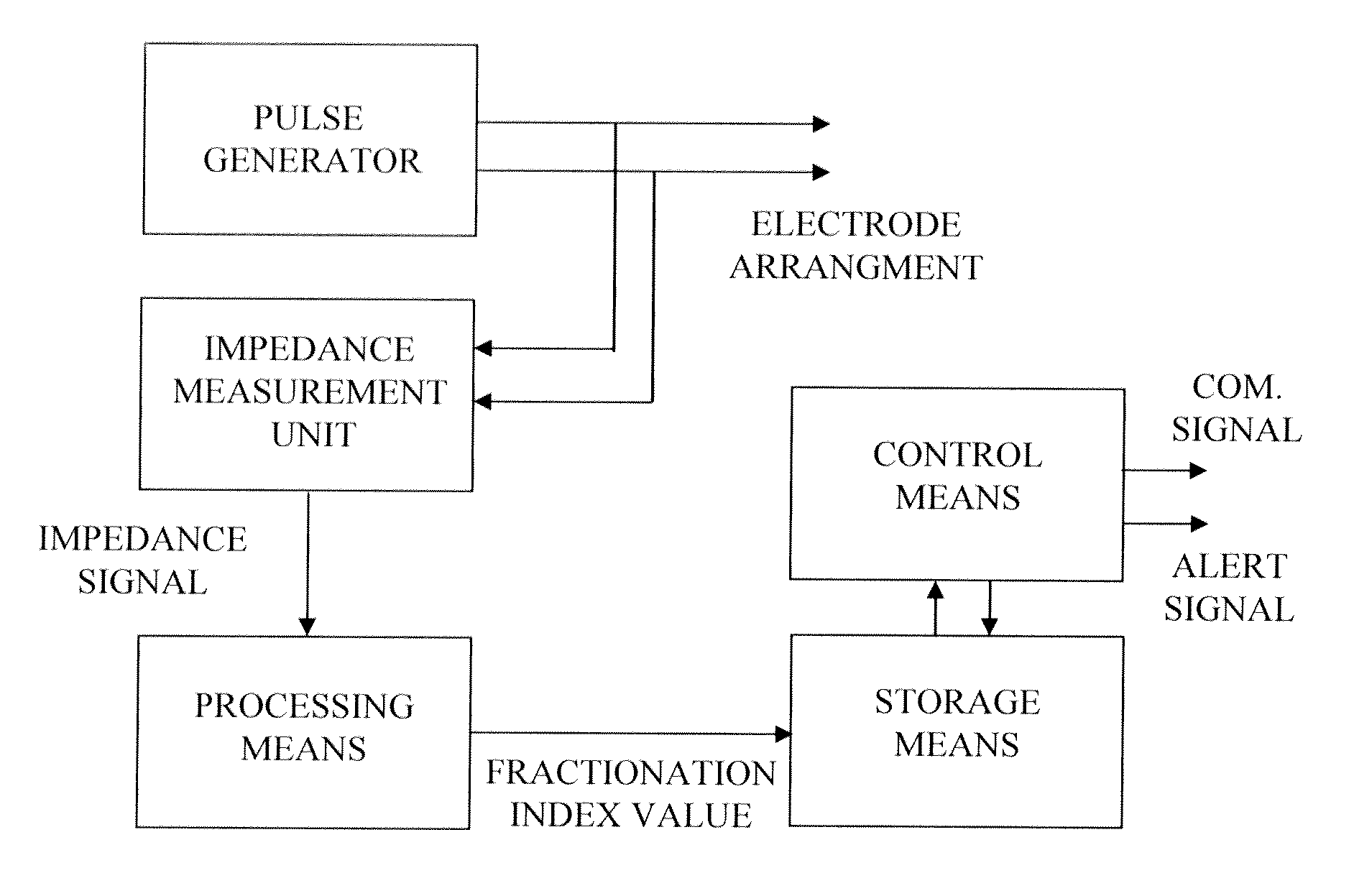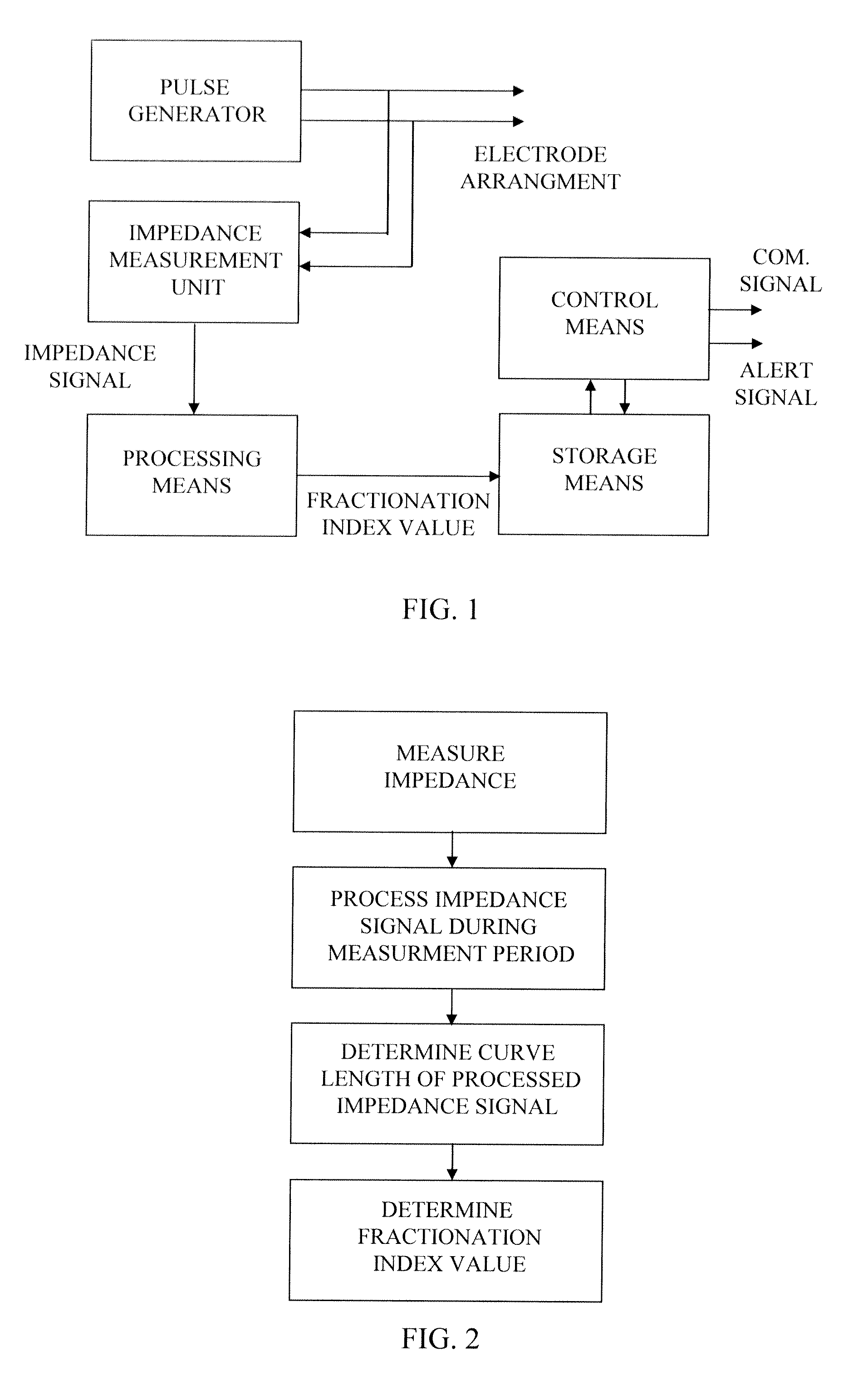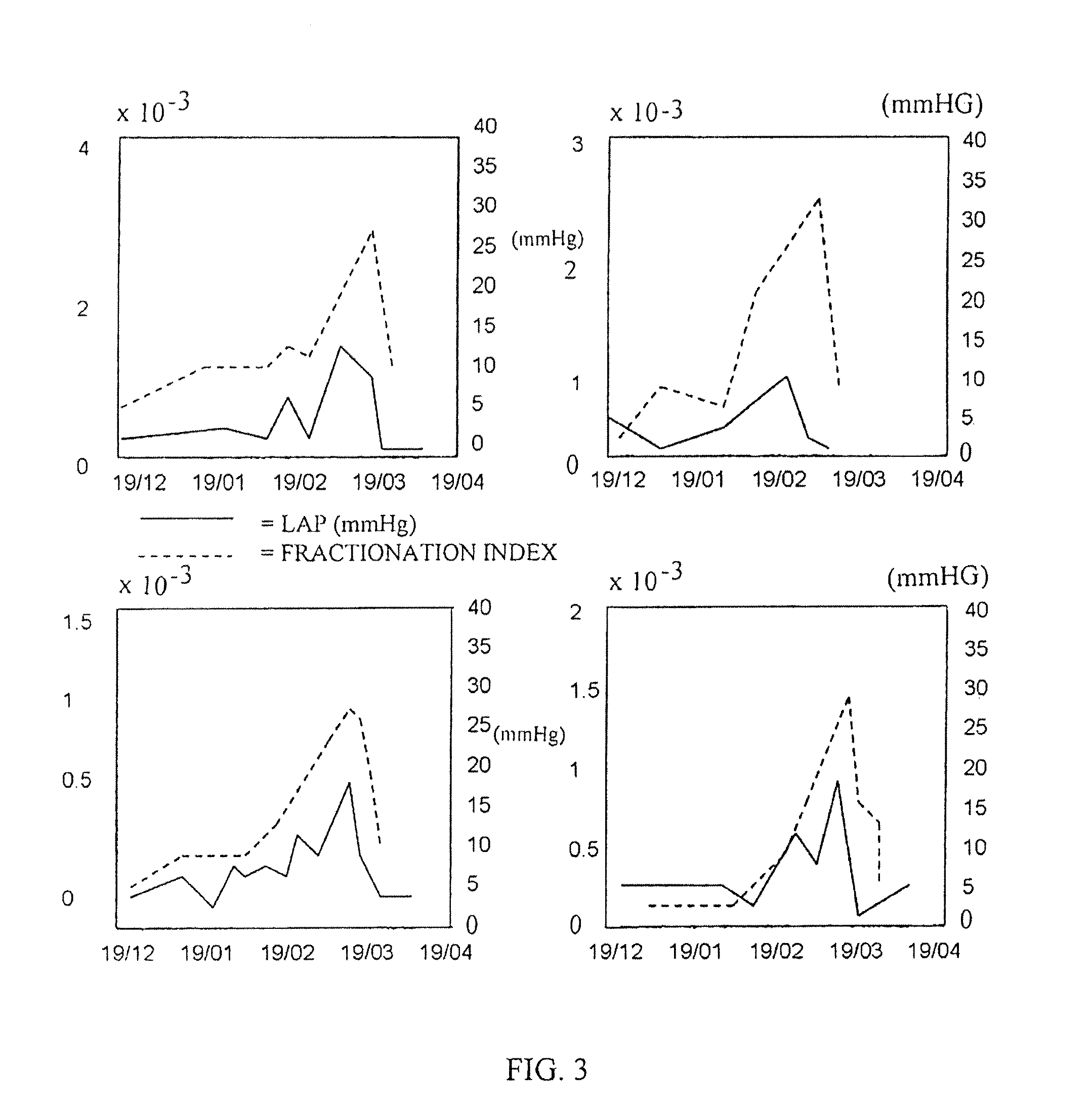Implantable heart stimulator for measuring dyssynchrony using impedance
a heart stimulator and impedance technology, applied in the field of implantable heart stimulators, can solve the problems of reducing the efficiency of the ventricle in patients with heart failure, asynchrony greatly reducing the efficiency of the ventricle, so as to achieve easy implementation, increase the fractionation of the impedance signal, and improve the effect of efficiency
- Summary
- Abstract
- Description
- Claims
- Application Information
AI Technical Summary
Benefits of technology
Problems solved by technology
Method used
Image
Examples
first embodiment
[0048]In order to determine the curve length the processing means is adapted to perform the following procedure in accordance with a [0049]Average >10 s of data into an average waveform (storing the average R-R-interval from the included heartbeats).[0050]Divide this new waveform by its maximum value.[0051]Sum up the absolute difference between adjacent samples.[0052]Divide by the stored average R-R-interval which results in the final output.
[0053]More in detail, the first embodiment is performed by the following steps:
[0054]a1) filtering the impedance signal to remove noise;
[0055]a2) averaging the impedance signal during the measurement period, preferably being larger than 10 seconds;
[0056]b1) storing the average waveform;
[0057]b2) storing the average R-R interval from the included heartbeats;
[0058]b3) divide the stored average waveform by its maximum value;
[0059]b4) summing up the absolute difference values between adjacent samples in the divided stored average waveform, wherein t...
second embodiment
[0061]In order to determine the curve length the processing means is adapted to perform the following procedure in accordance with a [0062]For a given number of heartbeats, calculate the sum up to the absolute difference between samples for each heartbeat and then normalize by the number of heartbeats. To remove the influence of noise in the signal, instead of calculating the absolute difference between samples next to each other, calculate the difference between samples further apart (e.g. below 8) and normalize by that separation.
[0063]More in detail, the second embodiment is performed by the following steps:
[0064]b′1) calculating, for each heartbeat in the measurement period, the absolute difference between samples separated a preset number of samples, e.g. 8;
[0065]b′2) summing up the calculated differences in b′1) for each heartbeat;
[0066]b′3) normalizing the sum calculated in b′2);
[0067]c′1) summing up the normalized sums determined in sub-step b′3) for all heartbeats during a ...
PUM
 Login to View More
Login to View More Abstract
Description
Claims
Application Information
 Login to View More
Login to View More - R&D Engineer
- R&D Manager
- IP Professional
- Industry Leading Data Capabilities
- Powerful AI technology
- Patent DNA Extraction
Browse by: Latest US Patents, China's latest patents, Technical Efficacy Thesaurus, Application Domain, Technology Topic, Popular Technical Reports.
© 2024 PatSnap. All rights reserved.Legal|Privacy policy|Modern Slavery Act Transparency Statement|Sitemap|About US| Contact US: help@patsnap.com










